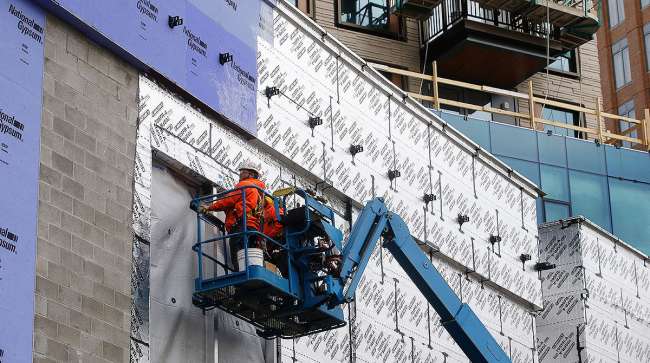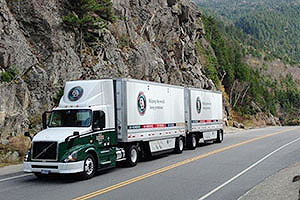Staff Reporter
US Manufacturing Contracts for Fourth Straight Month

[Stay on top of transportation news: Get TTNews in your inbox.]
Manufacturing activity contracted in November, led by a decline in production of fabricated metal products that experts said does not bode well for trucking fleets with exposure to the sector.
According to a monthly index from the Institute for Supply Management, fabricated metal was the weakest of six large industry sectors surveyed for November, while food, beverage and tobacco products remained the strongest.
“Sentiment (is) neutral regarding near-term growth.” U.S. factory activity contracted for a fourth consecutive month and at a slightly faster rate in November, according to the #Manufacturing @ISM® Report On Business®. The PMI® was 48.1%. https://t.co/d9k6JWkEV3 #ISMROB #economy
— Institute for Supply Management (@ism) December 2, 2019
Of the 18 overall manufacturing industries surveyed, five reported growth in November. They included paper products and computer and electronic products. The 13 industries reporting contraction to ISM in November included wood products; furniture and related products; textile mills; transportation equipment; and machinery.
Overall, the November ISM index came in at 48.1, a decrease of 0.2 percentage point from the October reading of 48.3 and the fourth straight month of contraction, according to the monthly survey of executives. A reading above 50 indicates that the manufacturing economy generally is expanding, while a reading below 50 indicates that it generally is declining, ISM said.
Despite the decline, ISM found that the overall economy grew for the 127th consecutive month. For trucking, however, the sector results are worrisome.
“I think the industrial sector is the worst part of the economy right now,” said Bob Costello, chief economist for American Trucking Associations. “If you are a fleet mainly on the industrial side of things, it’s tough right now.”
Less-than-truckload fleets tend to work with the industrial sector, Costello said, noting the LTL fleets are probably being hit by the manufacturing slowdown. Truckload fleets also do a lot of business with manufacturers, Costello said, but not in the same percentages as LTL fleets.
On Dec. 3, Old Dominion Freight Line, one of the largest North American LTL fleets, said it had felt the softness in the fourth quarter, issuing an update before the quarter ends Dec. 31.
“Our revenue results for November reflect the continued softness in the domestic economy,” said Greg C. Gantt, president and CEO of Old Dominion, in a news statement. “Although our tonnage declined on a year-over-year basis, this volume trend is beginning to stabilize and our revenue per hundredweight has continued to increase.”

Old Dominion Freight Line
Old Dominion Freight Line ranks No. 9 on the Transport Topics Top 100 list of the largest for-hire carriers in North America.
Robert Dieli, chief economist at the research firm MacKay and Co., told Transport Topics that the ISM number appears to show the manufacturing sector has stalled, but without large warning signs that sometimes accompany a stall. “The change itself was not that big,” said Dieli. “It’s not getting materially worse.”
According to ISM, an index above 42.9, over a period of time, indicates that the overall economy, or gross domestic product, generally is expanding. A reading below 42.9 means it generally is declining.
“Overall, sentiment this month is neutral regarding near-term growth,” Timothy R. Fiore, chairman of the ISM Manufacturing Business Survey Committee, said in the release. “Inputs indicate supply chains are meeting demand and companies are less confident that materials received will be consumed in a reasonable time period.”
Fiore added that he believes global trade remains the most significant cross-industry issue.
Dieli said he expects the effects of the slowdown to continue for about five to six months, and to manifest themselves in different ways over time.
One example he cited is brake pads, noting that as fewer trucks leave the West Coast ports with steel and other materials for manufacturing, the trucks accrue fewer miles. That reduces the need for brake maintenance, which reduces the sales of brake pads. Dieli said those are the second-order effects on the economy, making any slowdown difficult to immediately shake out.
Avery Vise, vice president of trucking for FTR, an Indiana-based research firm, said the ISM reading indicates that trucking rates are not poised to increase.
“It’s not the most reassuring news but it’s not so horrible,” said Vise. “The deterioration (in manufacturing) was very slight, more like a holding pattern.”
Still, trucking firms would like to see more growth, he said.
“Nobody is particularly happy,” said Vise. “Carriers are not getting rate growth.”
While manufacturing activity is not growing, Vise said, the activity level is relatively high, meaning the plateau is not too unpleasant.
Dieli said it is only natural for market conditions to correct back to that plateau once things have peaked, because peaks do not last.
“Nothing grows to the sky,” he said.
Want more news? Listen to today's daily briefing:




